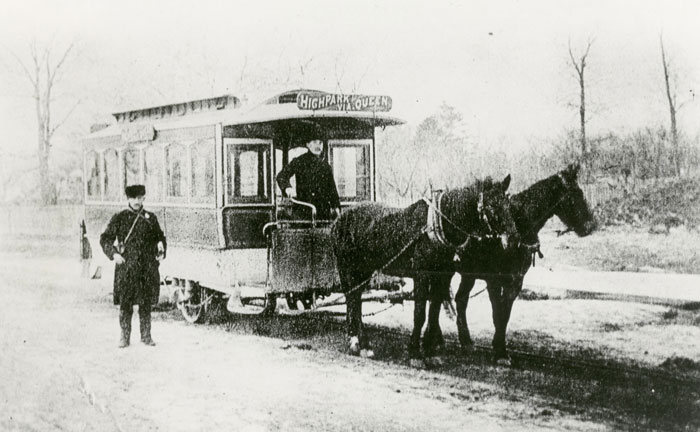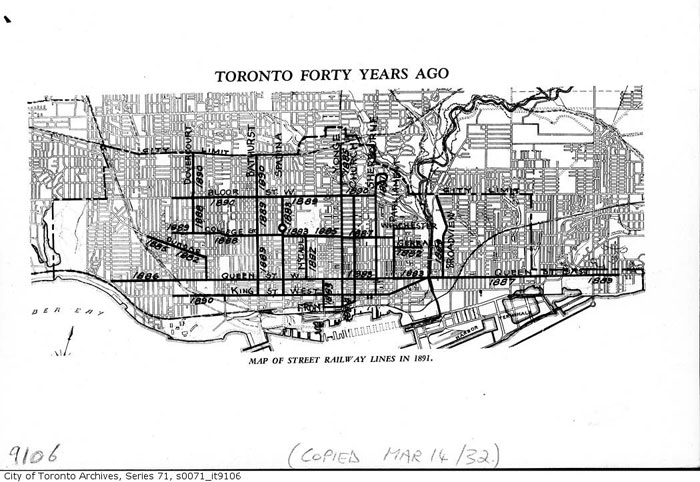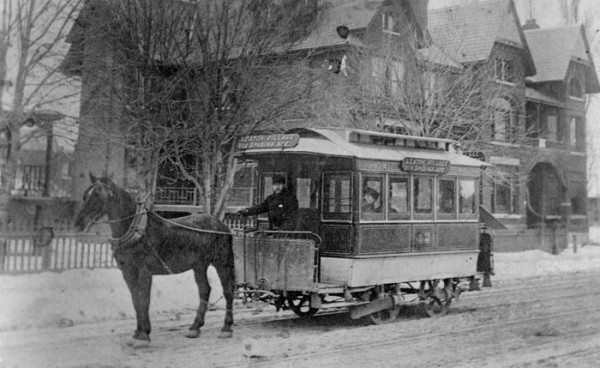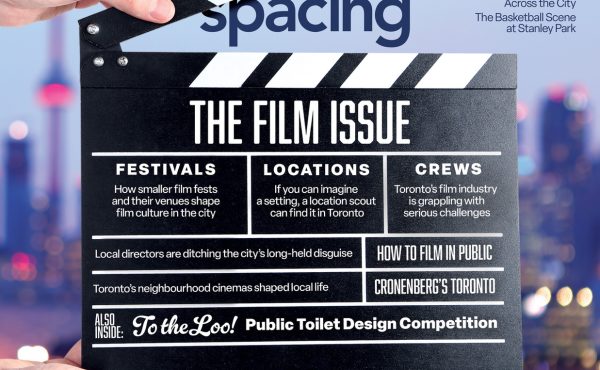There are perhaps few things more symbolic of Toronto than its streetcars. For more than 150 years, surface rail has formed the backbone of the city’s public transportation system, and despite numerous struggles and threats of abolition, it’s still streetcars that principally serve the downtown core: 240 vehicles carrying some 290,000 daily riders across 11 lines.
154 years ago this week, work started on the city’s first streetcar route: a horse-drawn “street railway” between Yorkville town hall just north of Yonge and Bloor and St. Lawrence Hall on King St.
The route was chosen based on its popularity. The city’s first public transit company, founded by cabinet maker and undertaker H. Burt Williams in 1849, operated a stagecoach service between roughly the same two points, linking the Toronto’s main market with what was then the independent town of Yorkville.
Williams started out with just four “omnibuses,” each one capable of carrying just six passengers, but as the business and ridership grew, so did the fleet. By the 1850s, buses were leaving every few minutes during peak hours.
The Toronto Street Railway company was founded in 1861 by Alex Easton of Philadelphia. His vehicles, while still pulled behind a horse, promised a smoother ride compared to the Williams buses. The city’s roads were still unsealed in the 1860s, and the surface was often rutted by wagon wheels or a muddy quagmire in the rain.
Tenders for Easton’s street railway were printed in the Globe and other Toronto newspapers in Feb. 1861. The advertisements, which carried the official seal of the City of Toronto, sought companies interested in acquiring “the privilege of construction horse railways on the streets of the city.” The deadline for proposals was 14th March.
Sensing the arrival of a street railway would mean an uptick in business, merchants on Yonge St. began marketing their products around the transit line. A tea shop at the corner of present day Yonge and Dundas invited “everybody from the peasant to the prince” to pay a visit when the line opened.

Construction started with the laying of rails on Yonge St. north of Bloor on August 15, 1861. “The work will be prosecuted with vigour, and Mr. Easton anticipates that the cars will be running on the track in about a month,” the Globe wrote.
Amazingly, Easton had pledged to lay roughly three kilometres of track, import streetcars from Philadelphia, and acquire all the various sundries needed to operate a transit service in just four weeks. The feat wasn’t deemed remarkable in 1861, but it should have been. The rails were also being imported from Philadelphia and other metal parts were shipped from a foundry in Hamilton.
At some point in the pre-construction phase, a decision was made that still effects modern TTC streetcar and subway operations. The track gauge, the distance between the rails, was set at an unusual 4 ft. 10 7/8 inches—slightly wider than the gap used by most other railways. According to Transit Toronto, this was so public wagons could use the rails, too.
From the Articles of Agreement between the Toronto Street Railway and the City of Toronto: “The gauge of the said railways shall be such that the ordinary vehicles now in use may travel on the said tracks.” The iron-tired wagon wheels of private carts could use the inside of the metal rail, the city thought, and the streetcar wheels the outside, provided the former didn’t interfere with the latter.
In future years, instead of replacing the city’s entire network of streetcar rail, the TRC and its successor the TTC simply bought vehicles that fit the existing track. Even the new Bombardier low floor streetcars and the Rocket subway train are designed to use the TRC track gauge that was chosen to suit 19th century horse-drawn wagons.
By August 30, just 15 days after work started, the track reached Queen and Yonge. That day, the city’s first streetcars arrived at the Queen’s Wharf near present day Bathurst and Lake Shore. Seven “comfortable, tasteful” vehicles with views of various Toronto buildings printed on the outside were brought on the back of wagons to Yorkville where they were met with cheers and applause from a group of about 300 people.
Each streetcar held 24 people, making the capacity of Toronto’s first streetcar system 168—about 35 fewer than can be squeezed into a single articulated streetcar on Queen St. during a typical rush hour today.

As Easton promised, the line opened less than a month after construction began, on September 10. The first streetcar was scheduled to leave Yorkville at 4:00 p.m. loaded with dignitaries, but as the car pulled out of the barn it was mobbed by boisterous well-wishers who claimed the seats for themselves and refused to budge.
Drawn by a single horse, the first car had barely traveled a block before it derailed at Bloor St. “The passengers inside alighted and assisted in placing the vehicle on the rails again,” the Globe reported. “This occurred several times with all the cars on the journey, but the passengers treated the delay as a joke, and the crowd were always ready to give a ‘shove’ or a ‘lift’ to keep moving.”
When the first car reached St. Lawrence Hall, the passengers “gave three hearty cheers for the Queen” and a band struck up the national anthem.
Toronto had its streetcars, and the city felt like celebrating. A concert and ball was held at Yorkville Town Hall that evening, featuring a vocal performance by Augusta Robinson, the wife of Toronto mayor John Beverley Robinson, and the band of the British Army’s 30th (Cambridgeshire) Regiment of Foot.
“Everybody there seemed determined to be pleased,” the Globe reported. “Even the rain, which fell heavily in the evening, was looked upon as a sort of blessing.”





3 comments
Streetcars are now horseless. carrying many, many occupants. Single occupant carriages are also now horseless but there are now more of them causing much of the congestion these days.
very nice article – dont forget about Shimen Nepom who was a conductor on the College streetcar in the 1930s and wrote wonderful poems in Yiddish about his experiences. I have set them to music on my CD Tramvay Lider/Streetcar Songs , on sale at Spacings Bookstore
It has been mentioned that Thornton Blackburn (1812–1890) an escaped slave from the states may have been the originator the red and yellow colours of the TTC when he started a taxi service in Toronto in 1834. See “I’ve Got a Home in Glory Land: A Lost Trail of the Underground Railroad” – in fact there is a street named after him just west of Broadview, south of Gerrard. fascinating read – highly recommended.